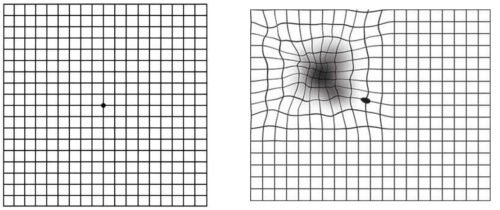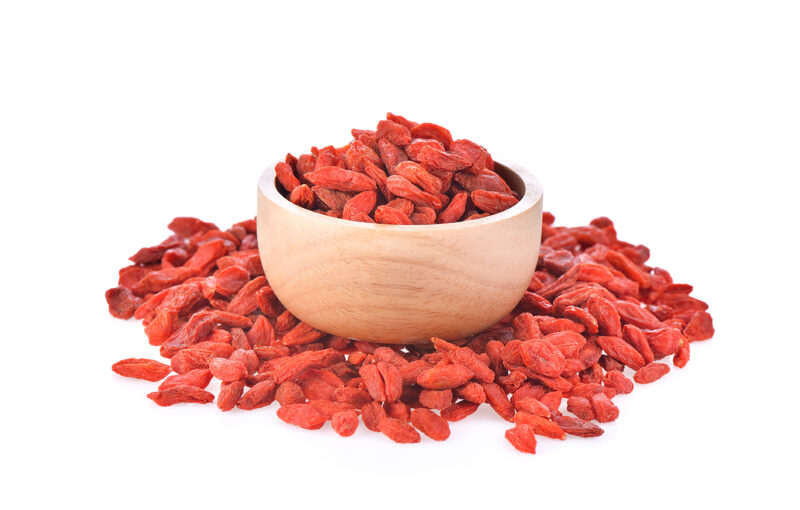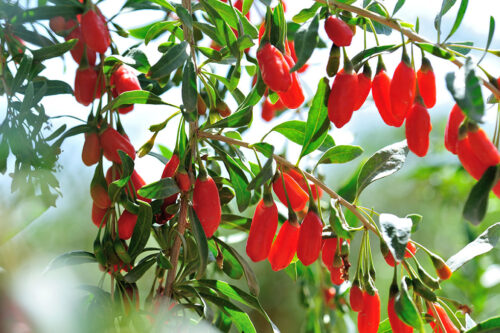
Eye condition: macular degeneration
Age-related macular degeneration (AMD) is a degenerative condition affecting the central part of the retina (the macula). It is the leading cause of loss of vision in people over the age of 60, affecting 11 million people in the United States with the number expected to double to 22 million by 2050. Worldwide, the estimated number of people with AMD is 196 million, expected to increase to 288 million by 2040. This makes AMD the third leading cause of blindness worldwide, more than glaucoma and cataracts combined.
Macular degeneration occurs when a part of the retina, the layer of tissue in the back of the eye that senses light and sends images to the brain, is damaged. The result is the loss of central vision, regardless of near or far sight while peripheral vision remains normal. It is described like looking at a clock without seeing the numbers.
There are two types of AMD:
Dry AMD is where parts of the retina get thinner with age and tiny lumps of protein called “drusen” grow. This affects 8 out of 10 people with AMD and there is no effective medical treatment.
Wet AMD is less common and occurs when blood vessels grow under the eye and cause blood and other fluids to accumulate, scarring the macula.[1]
Vision loss is faster with wet AMD than dry AMD. Loss of vision begins with a progressive tendency to blur and the consequent formation of black spots (blind spots) in the field of vision. It is important to catch vision changes as soon as possible.
There is a simple home test called an Amsler grid (below, left) that is recommended for people over the age of 50 to do daily. It will correctly reveal problem spots in your field of vision.

For someone with AMD, an Amsler grid may appear to have wavy lines or blank spots (above, right).
To use the Amsler grid, follow these steps once a day, every day:
- Wearing any glasses you normally use to read, hold the grid 12 to 15 inches away from your face in good light.
- Cover one eye.
- Look directly at the center dot with your uncovered eye and keep your eye focused on it.
- While looking directly at the center dot, notice in your side vision if all grid lines look straight or if any lines or areas look blurry, wavy, dark or blank.
- Follow the same steps with the other eye.
If you notice any areas of the grid that appear darker, wavy, blank or blurry, contact your ophthalmologist right away. He or she will check to see what’s going on, and begin treatment if appropriate.
Remember: doing this simple at-home eye test once a day, every day can help save your vision.

Dried goji berries on white background
Goji Berries and Vision
A pilot study[2] found that goji berries (Lycium barbarum, Lycium chinense, also called wolfberry), were administered to 27 participants with wet age-related AMD, aged 45-55, who were divided into two groups, one consuming 28 g of goji berries five times weekly. The other group took two supplements known to be beneficial for the eyes, 6 mg lutein (L) and 4 mg zeaxanthin (Z) for 90 days. It was found that those taking the goji berries had significantly increased “Macular Pigment Optical Density” (MPOD), while those in the LZ group had no changes. Macular pigment in the center of the retina protects the eyes from damaging blue light, and healthy macular pigment enables clear and vivid vision. Decreased macular pigment is a biomarker for AMD.
This is significant because it confirms the traditional Chinese medicine (TCM) understanding that Go Qi Zi (goji berry) benefits the eyes and vision. It is regarded as a Blood, Yin and Jing tonic for the whole body. TCM also recognizes that it happens to have a special affinity for the eyes and the power of seeing.
Goji berry is rich in organic acids, sugars, polysaccharides, carotenoids (zeaxanthin), a precursor of vitamin A, vitamins C, vitamin B complex and vitamin E, flavonoids, phenolic acids, minerals, trace elements (i.e. zinc, iron, calcium, selenium, germanium, and phosphorus), 18 amino acids, alkaloids and fats. Plenty of research supports the TCM assertion that these berries are good for the vision.[3]
As goji berry is a member of the Solanaceae family of plants (which includes such common and delicious foods as tomatoes, potatoes and eggplants) some in-the-know folks studying nutrition and botanical healing may be concerned about ‘pro-inflammatory’ lectins found in this group. The lectins in the plants are dissipated when they cooked, which is the way goji berries are traditionally ingested (though there eating fresh or dried goji berries is also OK).
Basing a plant’s toxicity (especially ones that have been used as food for thousands of years) on a single element without considering how the presence of the other constituents, let alone in a complex formula of many herbs with their 1000s of constituents might ameliorate some of the negative effects is so far chemically very difficult if not impossible to prove.
A growing body of evidence substantiates that goji berries have a positive effect on slowing aging, neuroprotection, general well-being, and energy metabolism (i.e. glucose control in diabetics) glaucoma, immunomodulation and cytoprotection, as well as having antitumor and antioxidant properties protecting against the effects of oxidative stress. [4]
TCM assigns goji berries as a Yin and Blood nourishing tonic: [5]
| Taste | Temperature | Entering meridians | Dosage |
| Sweet (Chinese people call them “red raisins” freely adding them to soups, porridge and various dishes. | Neutral | Liver
Lung Kidney |
5-8g
Tincture: 2-4 ml |
Actions and indications of goji are as follows: [6]
| Actions | Indications/Syndromes |
| Nourishes and tonifies Liver and Kidney Blood and Yin
|
Blood and Yin Deficiency with sore back and legs, low-grade abdominal pain, impotence, nocturnal emissions, wasting and thirsting disorder and consumption
Liver and Kidney Deficiency |
| Benefits Jing and brightens the eyes
|
Liver and Kidney Deficiency where Jing and Blood cannot nourish eyes with dizziness, blurred vision and diminished visual acuity |
| Nourishes Yin and moistens the Lungs
|
Consumptive cough and wasting and thirsting disorder |
I routinely prescribe goji berries together with cannabis seed, walnuts, and huckleberries as a snack to munch on throughout the day to regulate blood glucose in type 2 diabetes.
Contraindications
It is contraindicated for those who have excess heat, inflammations and fever. As with many herbs they should be used with caution [7]during pregnancy. Because goji berries are yin which can be dampening (as all sweet tasting foods are), they should be used with caution by those who have symptoms of dampness, with loose stools and diarrhea and what TCM describes as Spleen deficiency.
It is a classic formula for eyesight when goji berries are taken with chrysanthemum flowers (Ju hua), and Six-ingredient Pill with Rehmannia in the formula “Ming Mu Di Huang Wan.” [8]

Goji berry fruits and plants in sunshine garden
Grow Your Own Goji
Finally, the growing popularity of goji, berries is bound to increase substantively with the research information that they are effective in preventing or at least slowing AMD and improving eyesight. Goji berries are becoming increasingly available at reasonable per pound cost at most natural food stores, Amazon and Costco.
Many gardeners may be interested in growing their own ‘seeing-eye plants’ in their farm or herb garden. My experience is that while these are heat-loving desert plants, they adapt well. After two or three years of growth in our own garden, we had no berries. Now after eight to 10 years, we enjoy a substantial harvest, but they are not easy picking. Goji is a thorny plant with small clinging fruits. Still it is fun to walk out on a sunny day and graze on bright orange red goji fruit. For those who are seriously interested in cultivating goji in I recommend Nature and Garden (https://www.nature-and-garden.com/gardening/goji-berries-lycium.html).
[1] Go Ji Berry Intake Increases Macular Pigment Optical Density in Healthy Adults: A Randomized Pilot TrialXiang Li , Roberta R Holt , Carl L Keen , Lawrence S Morse , Glenn Yiu , Robert M Hackman
[2] ibid
[3] https://scholar.google.com/scholar?hl=en&as_sdt=0%2C5&q=lycium+chinensis&btnG=
[4] https://www.sciencedirect.com/topics/agricultural-and-biological-sciences/lycium
[5] https://www.americandragon.com/Individualherbsupdate/GouQiZi.html
[6] Ibid
[7] https://www.nature-and-garden.com/gardening/goji-berries-lycium.html
[8] https://www.activeherb.com/mingmu/
